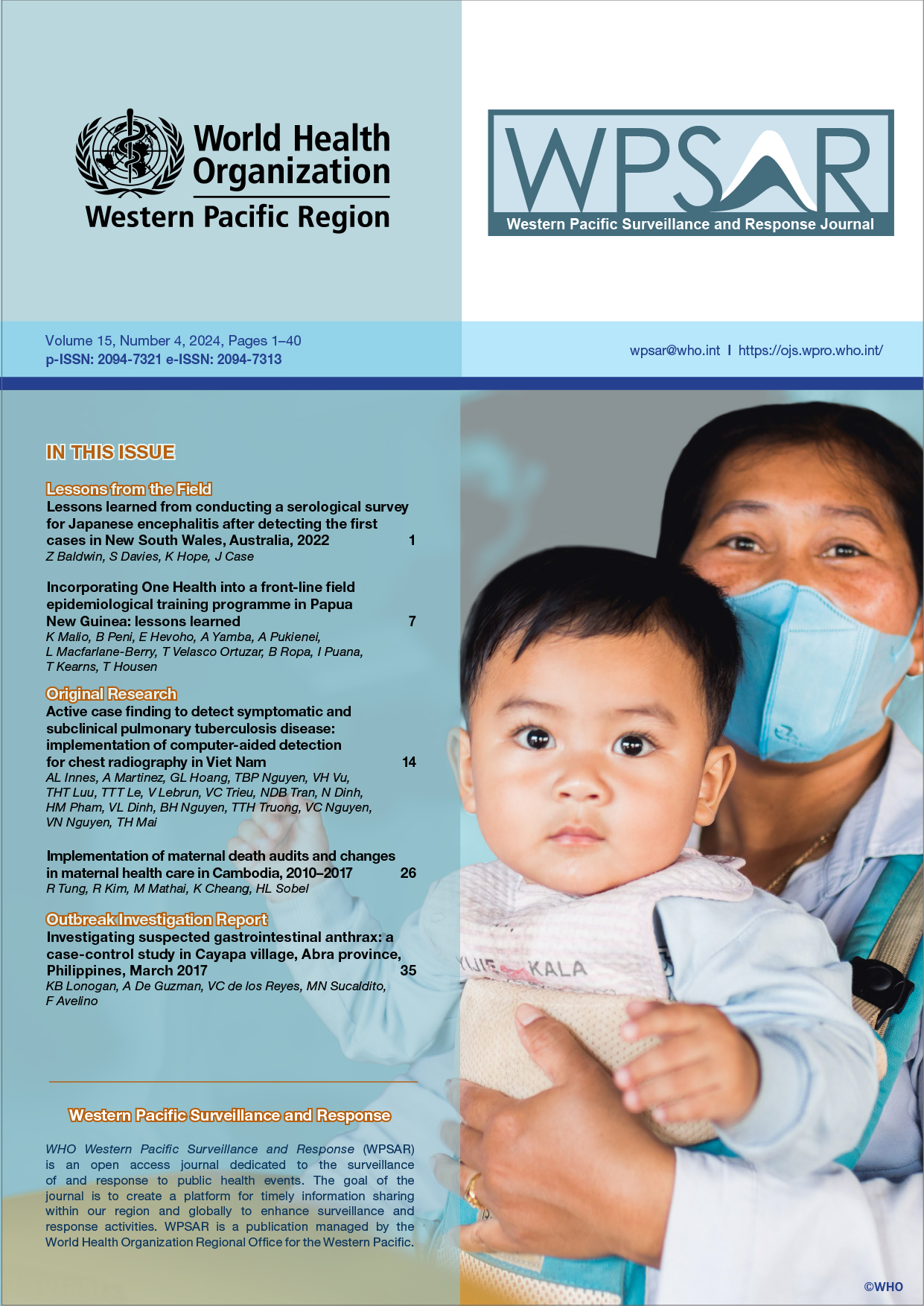Investigating suspected gastrointestinal anthrax: a case-control study in Cayapa village, Abra province, Philippines, March 2017
DOI:
https://doi.org/10.5365/wpsar.2024.15.4.1067Keywords:
gastrointestinal anthrax, Bacillus anthracis, disease outbreaks, foodborne illness, PhilippinesAbstract
Objective: Due to rising cases of foodborne illness in Cayapa village, Abra province, Philippines, a team was dispatched on 21 March 2017 to conduct an epidemiological investigation. The objectives were to confirm the diagnosis, determine the existence of an outbreak, identify risk factors and recommend prevention and control measures.
Methods: A 1:2 case-control study was conducted. We defined a suspected case as a previously well village resident who developed abdominal pain or diarrhoea, and one or more symptoms of fever, vomiting, sore throat, difficulty swallowing or lymphadenopathy between 27 February and 14 March 2017. Confirmed cases were suspected cases who tested positive for Bacillus anthracis through bacterial culture or rt-PCR. Serum and soil samples were collected for testing, and an environmental survey and key informant interviews were conducted. Stata version 13 was used for data analysis.
Results: The epidemic curve indicated a point source outbreak for the 29 cases identified. Common signs and symptoms were abdominal pain (26, 90%), fever (16, 55%) and diarrhoea (14, 48%). One case presented with lymphadenopathy. Interviews revealed that a dead carabao had been butchered and sold to the villagers. The 11 serum specimens and five soil samples tested were negative for B. anthracis. After multivariable analysis, consumption of the uncooked meat of the carabao was significantly associated with being a case (adjusted odds ratio: 6, 95% CI: 1.7–18.4).
Discussion: This outbreak was most likely associated with the consumption of the carcass of a dead carabao. Educating such farming communities on preventive measures for zoonotic diseases is recommended.

